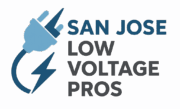Is 240V Considered Low Voltage?
Introduction
If you’ve ever plugged in an appliance or worked with electrical wiring, you’ve likely encountered 240 volts (240V). Many homeowners and professionals wonder: Is 240V considered low voltage?
The short answer is yes—by international standards, 240V falls under the category of low voltage (LV). However, “low voltage” doesn’t mean “safe voltage.” Even at 240V, there are significant risks of shock, burns, or fire if not handled properly.
In this article, we’ll break down how different regulatory bodies classify 240V, why it’s labeled as low voltage, and what it means for safety, applications, and modern technology.
For expert guidance and professional installation, visit San Jose Low Voltage Pros today.
Table of Contents
- Understanding Voltage Classifications
- International Standards Defining Low Voltage
- Is 240V Considered Low Voltage?
- Where is 240V Commonly Used?
- Safety Risks of 240V Systems
- Low Voltage vs. Extra-Low Voltage
- Common Misconceptions About 240V
- Future Trends in Low Voltage Technology
- Conclusion
- FAQs
Understanding Voltage Classifications
Electrical systems are categorized into voltage classes for standardization and safety. The International Electrotechnical Commission (IEC 60038) and other organizations define these ranges:
- Extra-Low Voltage (ELV): Below 50V AC or 120V DC
- Low Voltage (LV): 50–1,000V AC or 120–1,500V DC
- Medium Voltage (MV): 1–35 kV (depending on standards)
- High Voltage (HV): Above 35 kV
👉 By these definitions, 240V is well within the low voltage category.
International Standards Defining Low Voltage
Different regions define low voltage slightly differently, but they all agree that 240V is low voltage:
- IEC 60038 (Global Standard): Defines LV as 50–1,000V AC.
- European Union Low Voltage Directive (2014/35/EU): Applies to equipment operating between 50–1,000V AC.
- NFPA (U.S. National Electrical Code): Classifies 240V household wiring as low voltage.
- OSHA (U.S. Occupational Safety and Health Administration): Considers 50–600V as “low voltage” in workplace safety rules.
✅ Conclusion: Globally, 240V falls under low voltage by official classifications.
Is 240V Considered Low Voltage?
Yes. 240V is considered low voltage under IEC, NEC, OSHA, and EU standards.
- In North America, residential homes typically use 120/240V split-phase systems, and both values are within the low voltage range.
- In Europe, Asia, and Africa, the standard household supply is 230–240V single-phase AC, also categorized as low voltage.
📌 Important distinction: “Low voltage” is a classification, not a safety guarantee. 240V can still be fatal if mishandled.
While some standards classify anything under 50V as low voltage (learn more here), 240V is typically considered part of the low-voltage category in power distribution.
Where is 240V Commonly Used?
240V systems are widely used across the world. Some examples include:
- Residential power supply in Europe, Asia, and Africa.
- Household appliances such as ovens, dryers, and water heaters in North America.
- HVAC systems requiring higher loads.
- Industrial machinery and commercial electrical distribution.
- Renewable energy systems where solar inverters often output 240V AC.
Safety Risks of 240V Systems
Although classified as low voltage, 240V poses serious hazards:
- Electric shock: Can cause burns, muscle contractions, or even cardiac arrest.
- Arc flash risks: Especially in faulty or improperly insulated systems.
- Fire hazards: Overloaded circuits or poor wiring can lead to fires.
Precautions for working with 240V include:
- Using residual-current devices (RCDs) or ground-fault circuit interrupters (GFCIs).
- Following NFPA 70 (NEC) wiring guidelines.
- Wearing insulated PPE when working on live systems.
- Hiring licensed electricians for installations and repairs.
Low Voltage vs. Extra-Low Voltage
It’s important to distinguish between low voltage (LV) and extra-low voltage (ELV):
| Classification | Voltage Range | Example Applications |
|---|---|---|
| Extra-Low Voltage (ELV) | Below 50V AC or 120V DC | Batteries, LED lighting, doorbells, telecom systems |
| Low Voltage (LV) | 50–1,000V AC or 120–1,500V DC | Household supply (120/240V), appliances, commercial wiring |
👉 240V is low voltage, not extra-low voltage.
Common Misconceptions About 240V
- “240V is safe because it’s low voltage.” → False. It’s still hazardous.
- “Only high voltage kills.” → False. Fatal shocks have occurred at voltages as low as 50V under the right conditions.
- “240V in Europe is different from 240V in the U.S.” → Partially true. Both are low voltage, but Europe uses 230–240V single-phase, while the U.S. uses 120/240V split-phase.
Future Trends in Low Voltage Technology
240V systems are evolving as part of global energy efficiency and renewable energy integration:
- Smart homes: More appliances and lighting systems optimized for 240V smart grids.
- Renewable energy: Solar inverters and energy storage increasingly tied to 240V systems.
- Electric vehicles (EVs): Residential charging stations often rely on 240V supplies.
- Hybrid LV-DC systems: Emerging in data centers and commercial facilities for efficiency.
When moving up to medium-voltage systems, such as 3.3kV, the classification changes significantly compared to 240V.
Conclusion
So, is 240V considered low voltage?
✅ Yes. By global standards (IEC, NEC, OSHA, EU), 240V is classified as low voltage.
But don’t be misled—low voltage does not mean safe voltage. At 240V, electrical systems can cause serious injury or death if mishandled. Always follow safety codes, use protective devices, and rely on qualified electricians when working with 240V systems.
